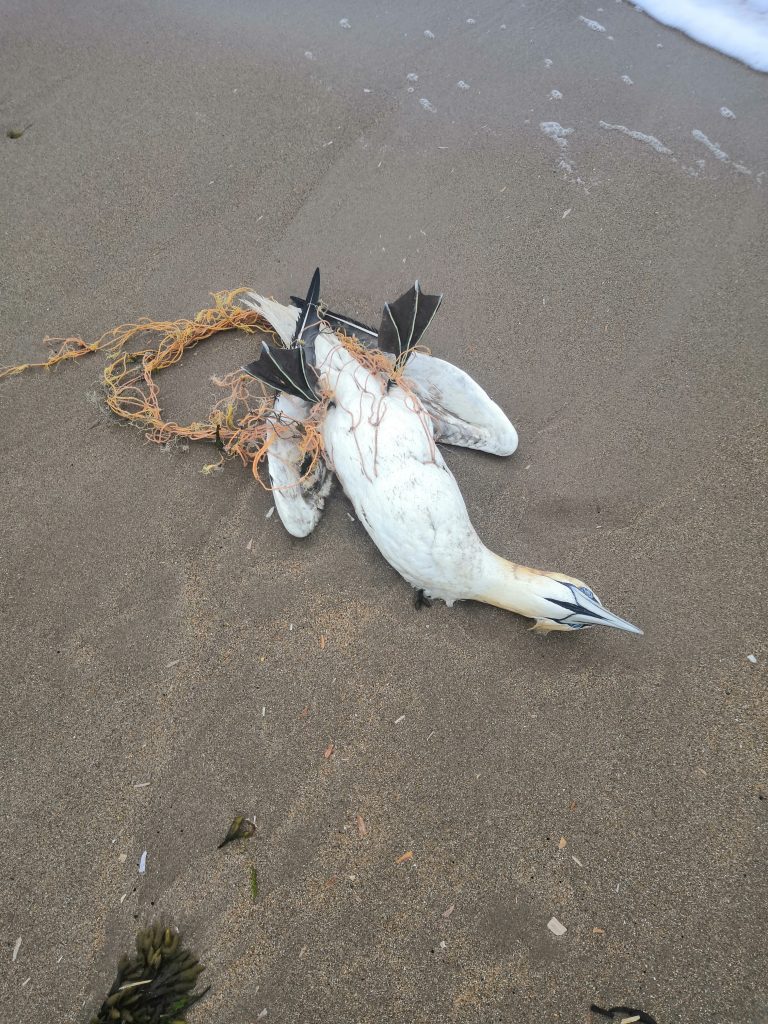HEARTBREAKING images shows a dead gannet that was found washed up on a Scottish beach after becoming entangled in discarded netting.
The tragic scene was captured on Gullane Beach in East Lothian this morning by shocked local Joanna Mason.
Joanna stumbled across the deceased bird which appears to have drowned after becoming tangled up in plastic netting.
The gannet’s webbed feet and wings are shown to be restricted back into its body by the orange ropes.

Joanna said the gannet looked to be “perfectly healthy” apart from the issues caused by discarded pollution.
She posted the images onto Facebook today writing: “This beautiful bird was washed up on the beach today. Does anyone know what it is?
“Its legs were all tangled in plastic netting.”
She later added: “It’s dead. I think it died as it couldn’t fly or get free of the netting as it looked perfectly healthy otherwise.”
Joanna is planning a beach clean at the same spot Sunday May 16 from 10am till 12pm.
She added: “I know it won’t solve everything but every piece of plastic and rubbish collected is a piece that can’t hurt birds like this.”
Social media users have left comments on the distressing post.
One user said: “It’s definitely a gannet -thousands back on the Bass (Rock) now and nesting.”
Another group member wrote: “So sad. Humans are just vermin. Everywhere we go, we leave a trail of destruction.
“I remember it was the same last year. I counted seven dead gannets. Often tangled up in thick seaweed.”
One social media user commented: “Poor thing.”
And another added: “What a shame.”
The gannet is believed to have come from Bass Rock, a small island inhabited by a large colony of gannets in the Firth of Forth where they nest each spring.
Bass Rock is one of the world’s biggest gannet colonies and every autumn between 10,000 and 20,000 young birds leave their nests.
The young birds known as gugas jump from their nests on the Bass Rock at about 12 weeks old into the sea below.